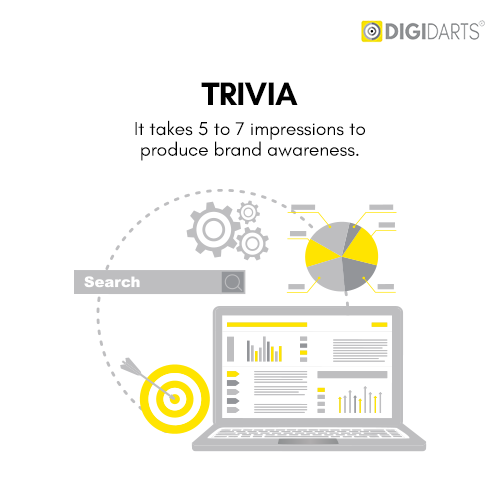If brand equity meant more than a simple buzzword in the digital age, then that would indeed be an understatement. Never has there been sufficient time to understand and measure the power of your brand online, as the markets get filled up and the heat of competition increases. Brand equity defines everything regarding what the brand stands for; if we take the example of a performance-based digital marketing company or a big footwear MNC like ASICS- potential consumers will only invest in their services and products respectively, if they are perceived as industry leaders in their fields. Today, we shall explore some of the key metrics, including brand loyalty, brand index, and brand sentiment, that will help you assess your online brand strength.

Understanding Brand Equity
The value of the brand develops in regard to consumers’ perceptions of it and their association with it. High brand equity means a brand has a lot of respect and recognition, and is trusted by customers, which can lead to increased sales, loyal customers, and certainly a competitive advantage. As one looks at it, online branding is in many ways a challenge; but then again, in an equal measure, an opportunity. The many digital platforms through which brand exposure is channeled do call for strategic engagement and maintain brand equity; this is exactly where the below-discussed metrics play a critical role.
1. Brand Loyalty
The main measure of brand equity is brand loyalty—the probabilistic purchase responses that consumers exhibit toward a brand over time, conditional on competitors’ marketing efforts.
Customers that are loyal are very important to the firm, not only for providing a stable stream of revenue but also because they serve as brand ambassadors who could multiply the good word-of-mouth for the brand.
Thus, online surveys can be used to measure brand loyalty by tracking repeat purchase rates, subscription renewals, or levels of engagement on social media sites. Online sources of surveys or reviews by customers can provide much relevant information regarding what might evoke both positive and negative occurrences of brand switching.
2. Brand Index
The brand index is a composite metric reflecting how the brand is performing online, with aspects such as visibility, influence, and reputation. This metric helps greatly measure the return on investment of online activity and, most importantly, whether online activity is improving the status of the company on the brand scorecard. Tools like Google’s Brand Lift, are used to measure how online ads directly impact brand perception and customer behavior.
3. Brand Sentiment
Brand sentiment analysis is the general feeling or perception of people toward any brand through their online discussions and social interactions. This essentially means data mining social media, forums, blogs, and review sites to dig out whether there is any positive, negative, or neutral sentiment toward any particular brand. This measure is very crucial within brand equity, and it offers ongoing consumer-based views of attitudes and experiences. However, this may lead to an erosion of the brand’s equity if not critically looked into and handled in good time.

Strategies for Enhancing Brand Equity Online
Here are some of the best strategies to develop and maintain online brand equity-
Messaging : Make sure all your values and messages are consistent on all online platforms. Communication consistency breeds brand recognition and gives trust to audiences.
Quality Content Creation: Developing quality and engaging content will prove an enhancement not only to strengthen the visibility of your brand but also to your brand as an expert. Interacting with customers online, exchanging social media banter, and even dedicating personalized emails and customer service help create goodwill and positive vibes toward the brand.
User-Generated Content: Encourage, collect, and showcase customer reviews, testimonials, and posts from social media. It has been demonstrated that user-generated content significantly boosts the strength of brand belief among consumers. -Always track online feedback regularly, and in case there are negative sentiments or issues arising, respond to them quickly. This shows the dedication of the brand to customer satisfaction, which turns the experience that would otherwise be negative into a positive one for the brand.
Conclusion
Measuring and improving the online presence of brand equity is a challenging but worthwhile exercise. Invaluable information may be derived from focusing on the key metrics, ranging from brand loyalty to the brand index and brand sentiment, on how powerful the brand is and what can be improved. One strong recommendation is to align with the best performance marketing agency; these agencies have brand experts and specialists who can tailor custom strategies that are geared toward boosting these metrics.
















